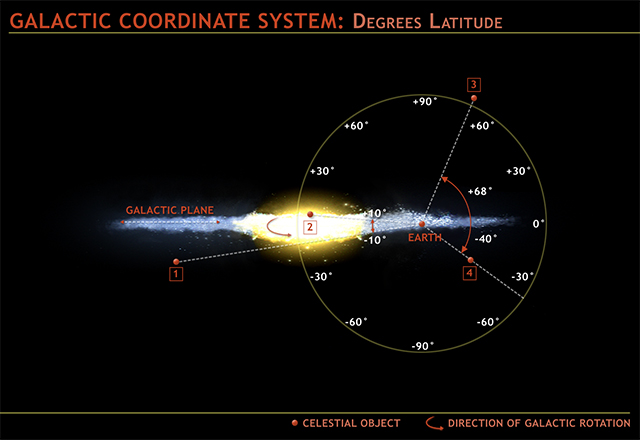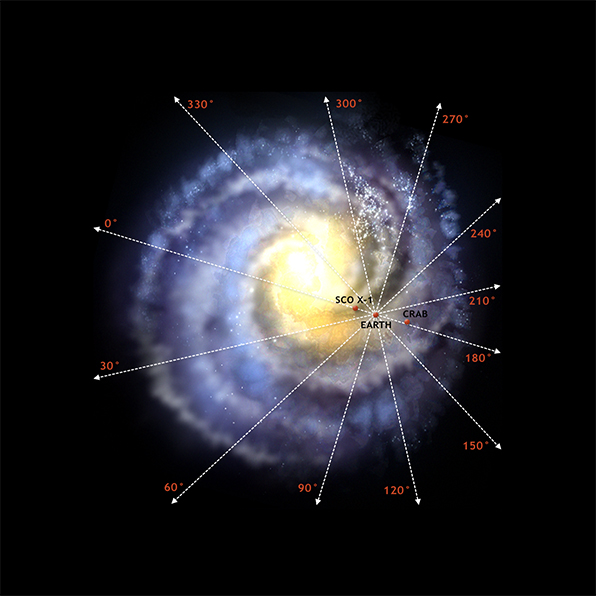
Imagine the Earth in its place in the Milky Way. You are standing on the Earth looking out into space. The night sky arcs over the planet. You are in awe of the vastness of space. You try to identify the constellations, and then you wonder, “Where are all those stars located?”
For centuries, humans have used a system of imaginary lines evenly spaced out around the globe to help with navigation and position. Pretend that you are far above the Earth and you are able to draw lines on the globe. The drawn lines that wrap about the Earth horizontally are known as “latitude,” while the drawn vertical lines that run through the poles are called “longitude.”
Latitude measurements range from -90 degrees (straight down to the South Pole) to +90 degrees (straight up to the North Pole) with zero being the middle value, which corresponds to the equator. Longitude on Earth is also measured starting with a zero point, and then ranges out to the east and west 180 degrees each way. This system is extremely useful because if you know the values for both latitude and longitude you can find any position on the entire planet.
Finding objects in the sky
Astronomers have developed a similar coordinate system to help locate the positions of objects in space. This galactic system also uses longitude and latitude like we do for things on our planet, but there are important differences.
Instead of envisioning that you are outside the Earth and looking down, imagine you are inside the middle of the Earth and looking outward. When you do this, project those imaginary lines of latitude and longitude onto the outside of the sphere you are sitting within. This is the way that astronomers think of the sky. Another important difference between Earth’s coordinate system and the one we use for the galaxy is how we orient it.
The galaxy and its shape
To understand how to use galactic navigation, we need to know something about how the galaxy itself is constructed. The Milky Way, our home galaxy, is a spiral galaxy. This means that it has a central bulge, or ball, where many stars and other material are concentrated. Most of the rest of the galaxy consists of thin, spiral arms emanating out from the central bulge. Like most stars, the Sun is located in one of these spiral arms, much like a pancake. Therefore, from our perspective, we see the bulk of the stars in the Milky Way in this pancake-like structure, which appears to us as a thin line in the sky.
GALACTIC LATITUDE
This pancake element of the Milky Way is called the “galactic plane.” While the equator is the middle of the Earth’s coordinate system, the plane of the galaxy is the zero point for galactic latitude. In other words, the zero value for galactic latitude lines up with the plane of our Galaxy. You can move up or down 90 degrees in either direction to find an object in this axis.

GALACTIC LONGITUDE
On Earth, the zero point for vertical positioning, or longitude, is the location of Greenwich, England. (This was done for certain historical reasons over a century and a half ago.) In the galactic coordinate system, the zero point of longitude points directly to the center of the Milky Way galaxy. The position of an object in this direction is then measured between zero and 360 degrees.
